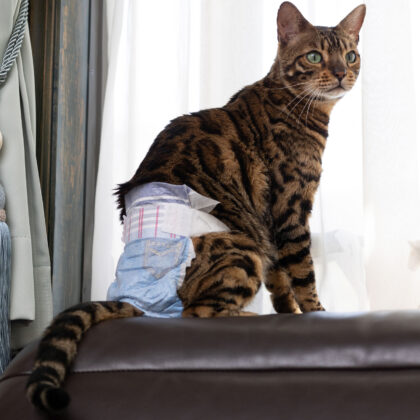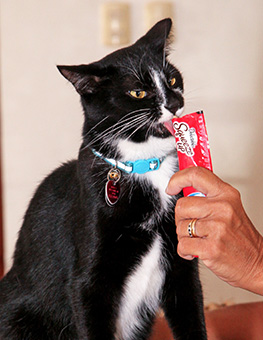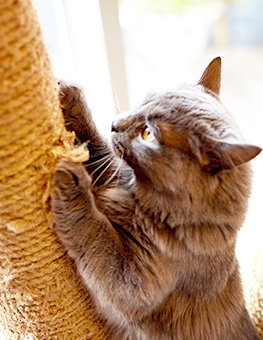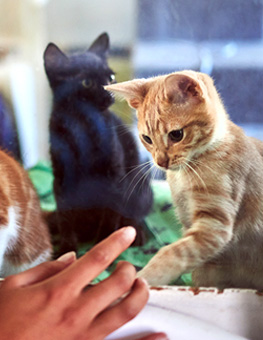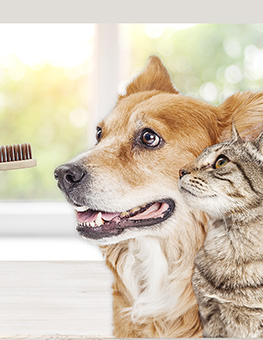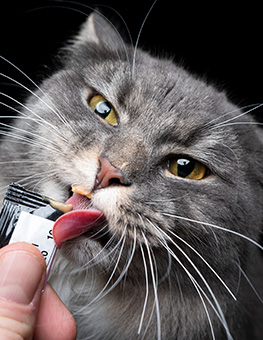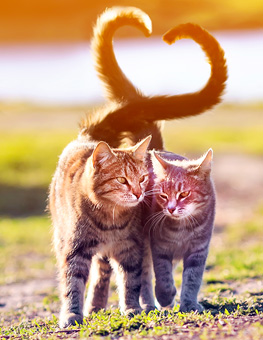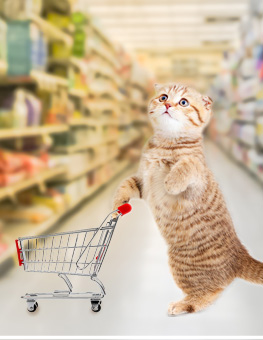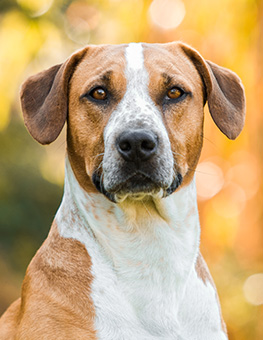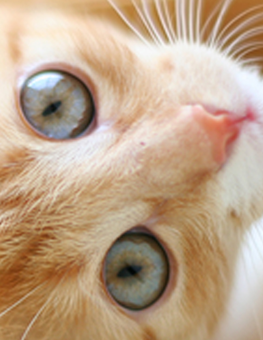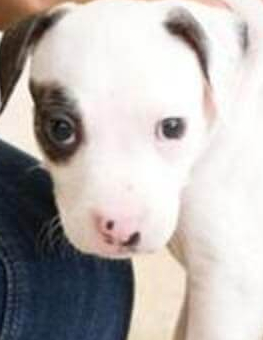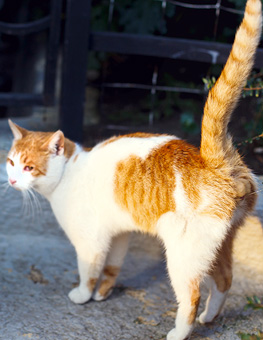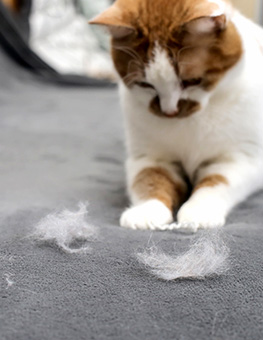Excess Weight and Your Cat's Health
Extra bits of the wrong foods, no matter how small, and lack of exercise will contribute to a weight issue for your cat.
A nibble here, a table scrap there won't hurt your kitty, will it? Well that may be all it takes to help expand your cat's girth.
The truth is, one little snack may not hurt, but you'd be amazed at how little it takes to add up to an overweight cat. According to Margie Scherk, DVM, ABVP, just ten extra pieces of an average cat food formula per day (above your cat's energy needs) can result in a weight gain of one pound of fat in one year!
Wild cats are not obese.
They expend a lot of energy working for their food: running, jumping, and climbing trees to catch mice or other prey. Nature provides many small meals throughout the day rather than one or two huge meals so these wild cats are able to burn calories more regularly and efficiently.
Eating too much of the wrong food (foods with too many carbohydrates and dry food), as well as a lack of exercise, puts your cat at risk for diabetes, hepatic lipidosis, arthritis, lower urinary tract infections (LUTI) and even skin disorders, according to Dr. Scherk.
Cats are "obligate carnivores" meaning they were not designed to eat carbohydrates. The natural (wild) cat consumes a little grain and greenery, but he relies mostly on animal proteins for growth, development and energy.
Before you put your cat on a diet, consult your veterinarian.
Before you decide that your cat is overweight, first let your vet rule out a serious medical reason for his weight gain. If you decide to put your cat on a diet, include your vet in his weight loss plan. Rushing weight loss can result in a potentially fatal condition called hepatic lipidosis or fatty liver disease, so proceed carefully. It’s also important to check with your vet for dietary recommendations.
Train him to be a hunter.
Food is only one part of your cat’s weight-loss regimen. Remember, the wild cat expends a great deal of energy hunting. If your vet endorses a specific dry food, you can mimic hunting by putting the kibble (not treats) in a treatball or creating a treasure hunt, said Alice Moon-Fanelli, a professor at Tufts University Cummings School of Veterinary Medicine. Another variation is to divide your cat’s daily ration into six or seven mouse-sized portions and place it in tiny bowls all over the house - in different rooms, on top of things, or under furniture. Make your cat work for her food. Like her wild counterpart, your pet gets to hunt, burn calories and eat much smaller portions.
Treats have their place.
Treats are very effective for training your kitty to do tricks or rewarding good behavior. Use treats as a prize when you need to do something uncomfortable like medicate your cat or trim his nails. But remember, too much of a good thing can be bad for your cat.
If you must give a reward, Joseph W. Bartges - B.S., D.V.M., Ph.D., DACVIM, DACVN, Professor, Medicine and Nutrition - suggests lower-calorie all-meat treats like bonito flakes, freeze-dried chicken or fish. They don't contain empty carbs, grains or calories. His rule of thumb is everything in moderation. Do not make treats more than five percent of your cat's diet.
Keeping an eye on your cat's weight and resisting the urge to feed your kitty when you know you should not, will help to ensure a happy, healthy life for your cat.



